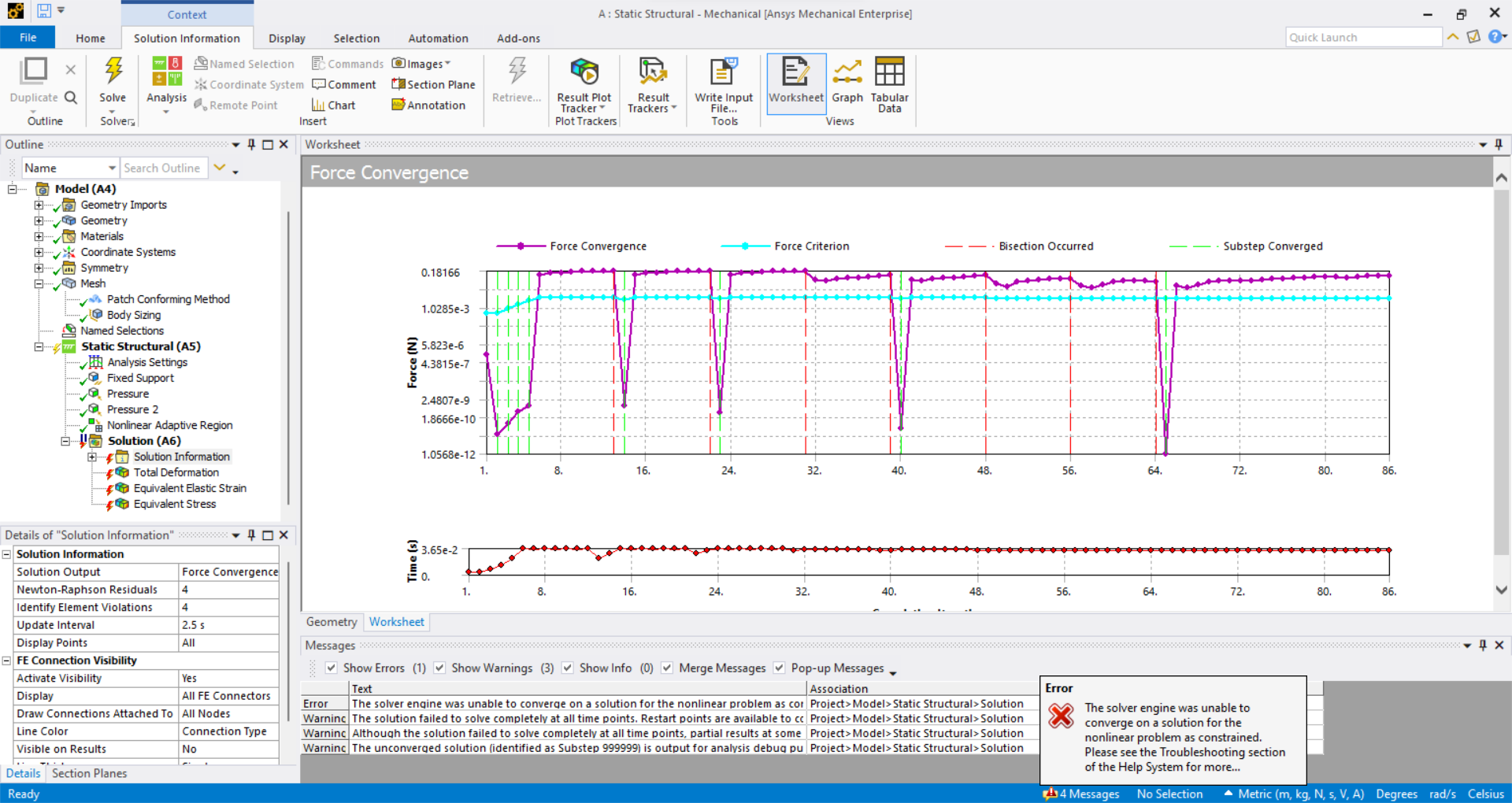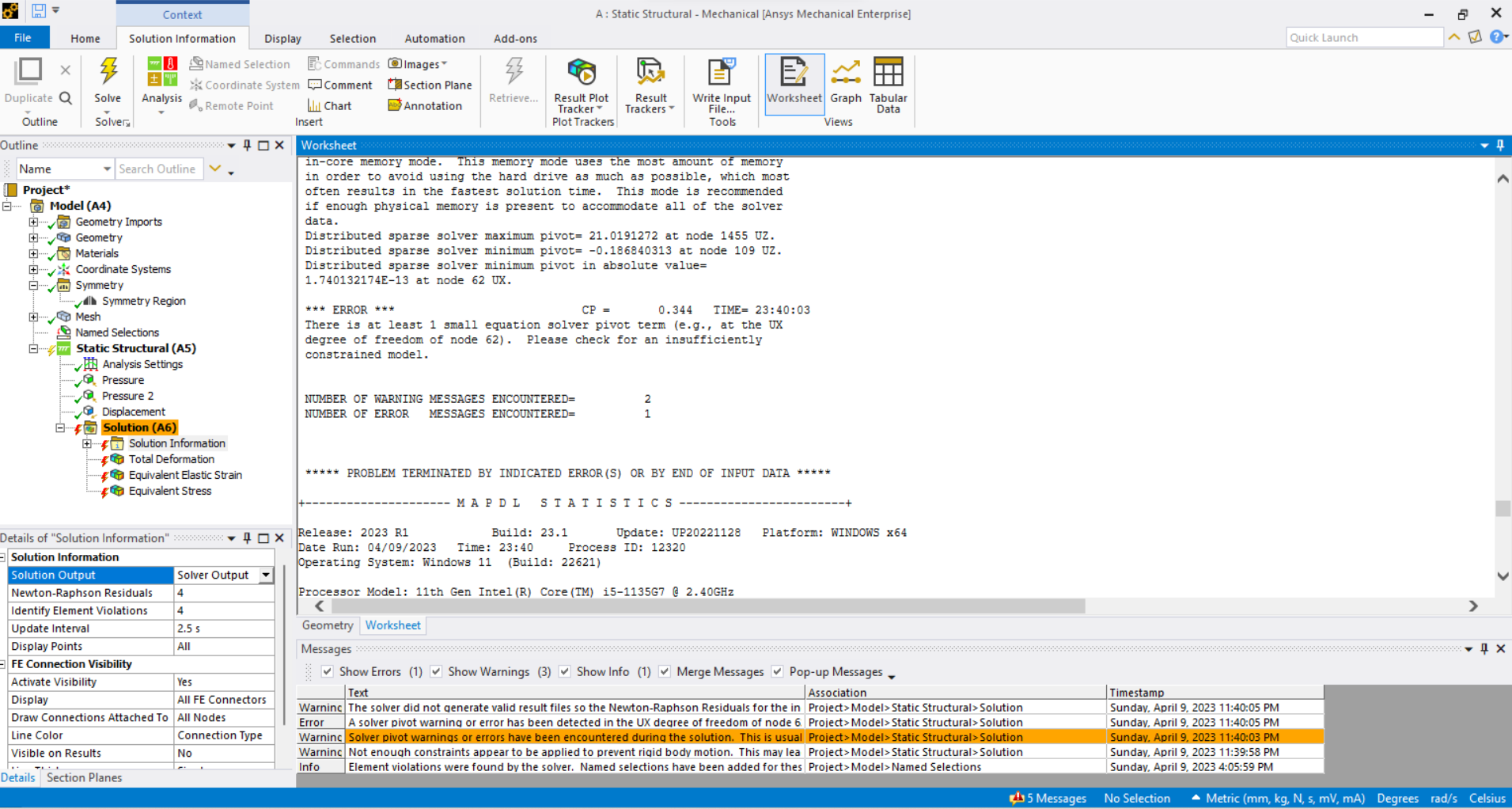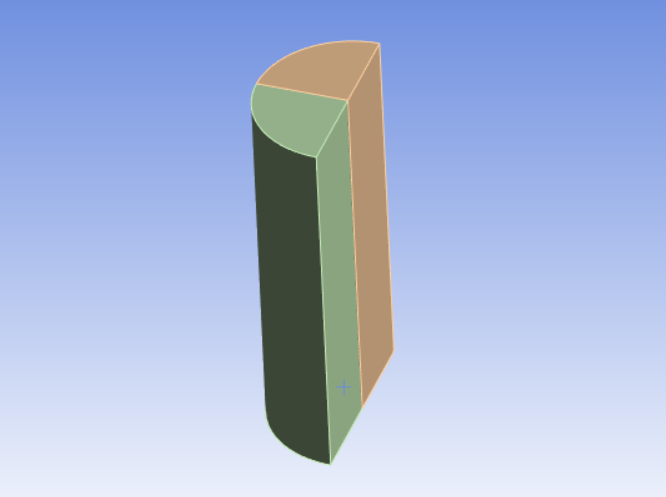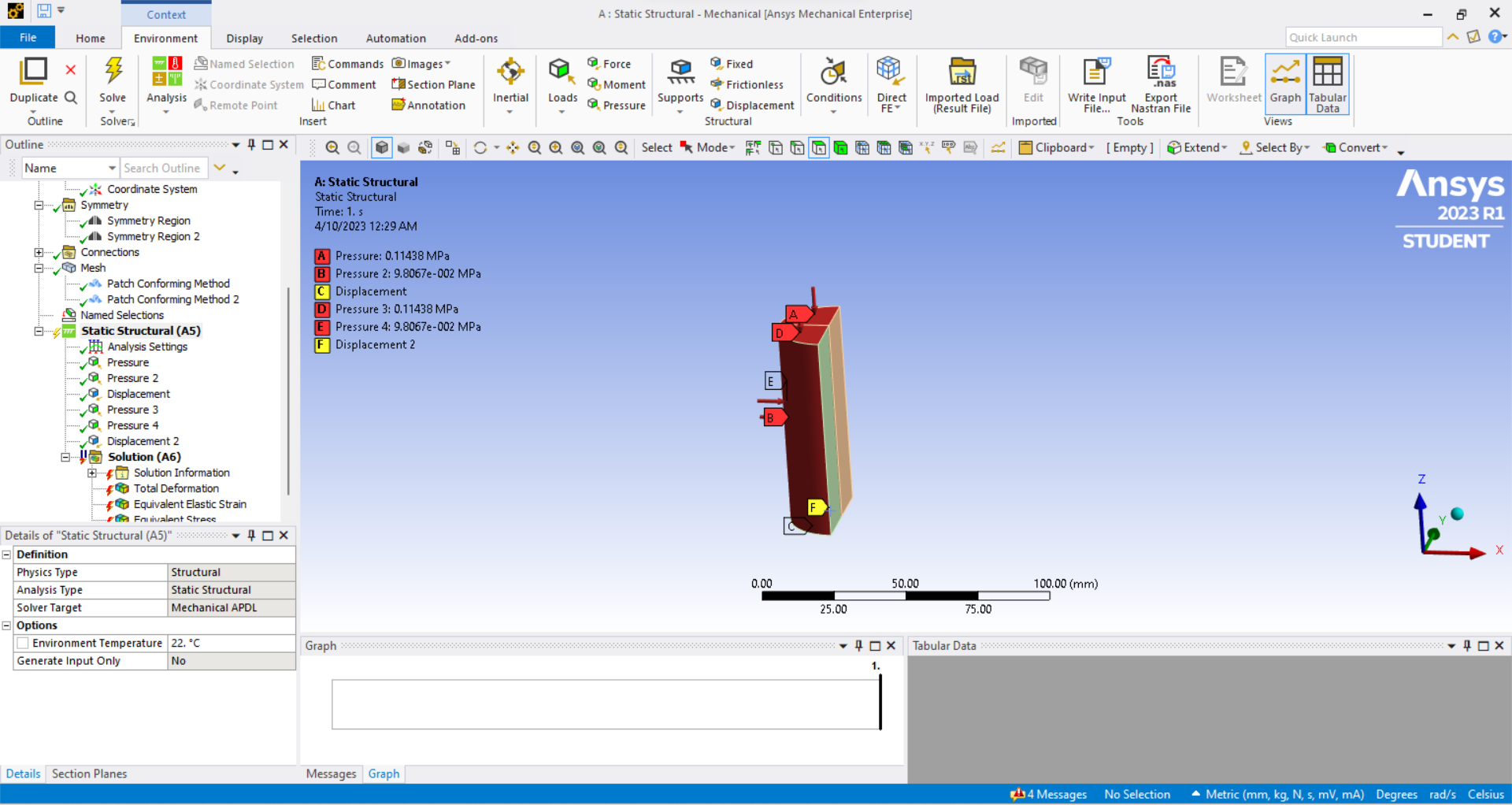-
-
April 9, 2023 at 12:03 pm
Jo Cruz
SubscriberHello Ansys Community,
I am trying to simulate an unconsolidated undrained triaxial compression test through static structural analysis, however, the software keeps on telling me that it doesn’t converge to a solution. My goal is to create a similar stress-strain curve in the software with the experimental results that I have. What I did is that I created a Soft Clay material with a Mohr-Coulomb model and after that, I created the cylinder model under triaxial compression but I am not sure if I used enough boundary conditions. I would also like to add that this is nonlinear.
The following screenshot is what happens and I can't seem to move forward from this.
I am not sure what data I should show but if anyone can help I am willing to give what is needed for your understanding.
-
April 9, 2023 at 3:20 pm
peteroznewman
SubscriberHello Jo Cruz,
Fixed Support may be hurting the convergence. I assume that is at the bottom of your model. If you have two vertical planes of symmetry and two faces with applied pressure that push the model onto those two symmetry planes, the bottom only needs a simple Displacement boundary condition to set the vertical DOF to 0.0 and leave the lateral DOF free. Then you can delete the Fixed Support.
Regards,
Peter-
April 9, 2023 at 3:46 pm
Jo Cruz
Subscriber
-
-
April 9, 2023 at 4:09 pm
peteroznewman
SubscriberHello Jo,
Since you have only one symmetry plane, there is no constraint to prevent motion along the X axis.
Split the body with a plane at 90 degrees to the first symmetry plane through the center of the circle. That symmetry boundary condition will prevent motion along the X axis.
Regards,
Peter-
April 9, 2023 at 4:32 pm
-
-
April 9, 2023 at 4:49 pm
peteroznewman
SubscriberHello Jo,
In Mechanical, suppress the brown body (or in SpaceClaim, suppress for Physics).
In the 1/4 circle that remains, the face that has a normal on the X axis has a Displacement of X = 0 and Y, Z are Free. The face that has a normal on the Y axis has a Displacement of Y = 0 and X and Z are Free. This is what the Symmetry regions do for you. You don't need both Displacement and Symmetry, but if you use Symmetry, you must have two separate ones and set the Normal axis correctly in each one. There are often three ways to do the same thing so Frictionless Support on any of those three flat faces is equivalent to the Displacement or Symmetry methods to support those faces.
Regards,
Peter-
April 9, 2023 at 5:55 pm
Jo Cruz
SubscriberHello Peter,
I understand it clearly now. However, when I placed the pressure on the 2 faces, it still doesn't converge. What I did is I replaced the pressure with a displacement at the top face and indicated the expected displacement from the experimental results that I have. Fortunately, it gave me results but I am not sure if it is reliable. I would like to ask if what I have done is okay or should I stick with applying the pressure.
Thanks again.
Regards,
Jo
-
-
April 9, 2023 at 6:44 pm
peteroznewman
SubscriberDisplacement is a good substitution and you can calculate the pressure from the reaction force and the area.
-
April 10, 2023 at 4:09 am
Jo Cruz
SubscriberHello Peter,
Thank you! I still have a few questions about the validation and verification of my model. Is it possible to ask for your email to discuss this with you in detail?
Regards,
Jo
-
-
April 10, 2023 at 11:45 pm
peteroznewman
SubscriberHello Jo,
You can ask detailed questions on the forum, which is better than email in my opinion. I sometimes feel it is better to have a live discussion and for that I need your email to set up a meeting. Is that what you want?
Regards,
Peter-
April 11, 2023 at 2:14 am
Jo Cruz
SubscriberHi Peter,
Yes, I agree that it is better to have a live discussion. When are you available?
Regards,
Jo
-
-
April 12, 2023 at 11:18 am
peteroznewman
SubscriberHi Jo,
I am in the Eastern Time Zone (New York). What city are you in? I can schedule a meeting Friday, Saturday and Sunday 9 AM - 6 PM except for lunchtime (noon-1 PM). Reply with your preferred day and time and an email address. Once I get your email address, you can edit your reply to delete your email address from this public forum.
Regards,
Peter-
April 12, 2023 at 12:30 pm
Jo Cruz
SubscriberThank you.
-
-
- The topic ‘Modelling a unconsolidated undrained triaxial compression test (Mohr-Coulomb)’ is closed to new replies.


- Project lines/edges into a face with the direction normal to the face
- No preview in explorer with scdox file
- Add-in Error Excel
- Fileformats
- Discovery 2025r2 failed to initialize
- Spaceclaim problem
- Using SpaceClaim scripts vs recorded blocks for parametric optimization workflow
- Different Body Naming and Extra Surfaces after Importing Solid Edge Part
- racing royals
- New Computer

-
4482
-
1494
-
1376
-
1209
-
1021

© 2025 Copyright ANSYS, Inc. All rights reserved.












